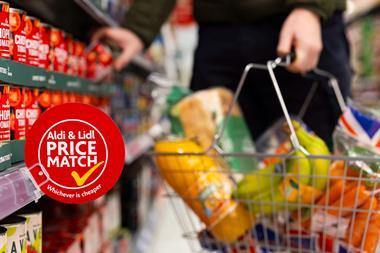
The government has set out its latest plans to tackle obesity. Alongside measures to increase activity levels and support families with healthy food vouchers, we’re being promised strict regulations on how brands can promote “unhealthy food items”.
This isn’t a new trend. Every few years we see a strategy that sets out guidelines, targets and a long-term vision (currently to halve childhood obesity rates by 2030).
The government has one thing right – we need to change the food environment. For too long we’ve blamed educators, parents, even young people themselves for what is a problem with the way the food system is set up. But the current strategy has a fatal flaw – the businesses that control the food environment are rarely engaged in this process, and as a result, these strategies fail to move the needle.
Because with every new set of regulations, businesses spend more time trying to understand where the goalposts are moving than working out how to create and market healthier products that people want to buy, in order to drive demand-led behaviour change.
In fact, these measures could well act as a disincentive to brands who are trying to nudge consumers to healthier options. If their ‘healthier’ options still fail to meet the standards for promotion, then why bother making them at all?
We are naive if we think that the food system will entirely forgo it’s responsibility to shareholders or employees in order to tackle the issue of child health.
Of course there is a place for regulation, but nothing is as powerful as consumer demand in shaping industry trends (just look at the groundswell of support for climate action – it’s ignited by real people who now have the option to buy and afford sustainable alternatives). We need to use the carrot and the stick to incentivise food brands to make products healthier and put marketing spend behind them, so they are commercially viable.
We need to shift the narrative away from ‘ban the bad’, and begin also to ‘promote the good’.
And there is ‘good’ out there. There is a myth that there are ‘healthy’ and ‘unhealthy’ retailers and food brands, but perception isn’t reality. It’s just that some brands are more motivated to shout about their healthier options.
There are valid reasons for this – brands that aren’t traditionally seen as ‘healthy’ or don’t have nutritious products as their core offering face backlash from consumers when they reformulate or change their beloved items. But these are changes that can be, and often are, made incrementally (to massive volume products), with tweaks to items that consumers love – reducing salt, fat, sugar to make them just a bit better for you leading to billions less calories consumed per year.
Once we understand the barriers to brands developing and promoting healthier items, and the key drivers of the consumers buying them (taste, convenience, price) we can incentivise the promotion of healthier items, by reworking the VAT system (away from hot and cold food towards those that are better for you), and encouraging brands to spend more on promoting nutritious food.
We then need to prove the elasticity of healthier food to show that promotions can drive volume, making it commercially appealing and sustainable for brands. To do this, we need to use data and insights to prove that healthier food sells and identify what incentives motivate behaviour. This has to be more effective than simply limiting the platforms and channels they can use to do so.
That’s why I have launched Smash – to provide a safe channel for purpose-led brands to prove that gen Z wants healthier, affordable and great-tasting food, to show that demand will go up when they have access to it.
Only then can we show that healthier food is better business and start to change the food environment. Only then will we start to see the radical shift needed to improve the health of young people.



















No comments yet